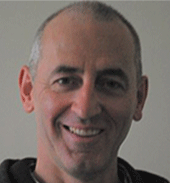Sphenobasilar Junction (SBJ) fusion, a flexible skull and too much biomechanics

I have been going back into biomechanics and have reread a few papers that influenced how I think about the skull and the cranial paradigm. Partly triggered by my periodic reading, like picking at a bad tooth, of skeptical cranial sites. (For example, Steve Hartman is a an osteopath critical of the cranial paradigm, you can access his papers here. )Here is an abstract of a paper from Forensic Science International (Sahni et al 1998) showing the SBJ fuses in young adults. They conducted their research by examining 84 autopsies and 73 CT scans of living subjects, looking at: 'time of fusion of the basisphenoid with the basilar part of the occipital bone in Northwest Indian subjects'. The abstract states that fusion starts in both sexes around 13 years old and:
'complete fusion is seen in all male subjects at 19 years' and 'All female subjects showed complete fusion at 17 years.'
The craniosacral therapist Andrew Cook shows why this is not necessarily a problem for the cranial model. He acknowledges fusion of the SBJ, but still argues for a cranium that changes shape due to the flexbility of the bones. His paper, 'The SBS Revisited - The Mechanics of Cranial Motion' (there is the main published paper and a simplified version in section 5. Miscellaneous and technical stuff on the link) goes into detail on the biomechanics of cranial motion and updates Sutherlands' model. He concludes:
'It is possible to explain the motion of cranial bones by use of a model that presupposes flexibility of bones, a mechanical structure based on tensegrity principles, and with an overriding assumption that biological structures self-optimise.'
Great article.Another very useful article, and website, is by Graham Scarr. 'A model of the cranial vault as a tensegrity structure, and its significance to normal and abnormal cranial development'. He states:
' Tensional forces in the dura mater have the effect of pushing the bones apart, whilst at the same time integrating them into a single functional unit.'
On Saturday 4th June 2011 I am off to a workshop run by the International Cranial Association 'The Evidence Base for Cranial Osteopathy', which will hopefully give some inspiration.
References Sahni D et al. Time of fusion of the basisphenoid with the basilar part of the occipital bone in northwest Indian subjects. Forensic Science International, 98 (1998) 41-45.




 Ged Sumner
Ged Sumner